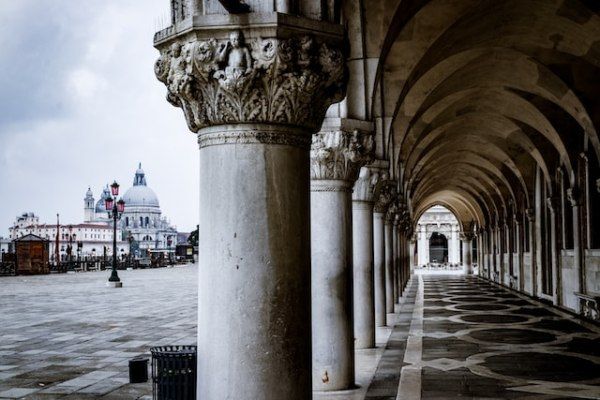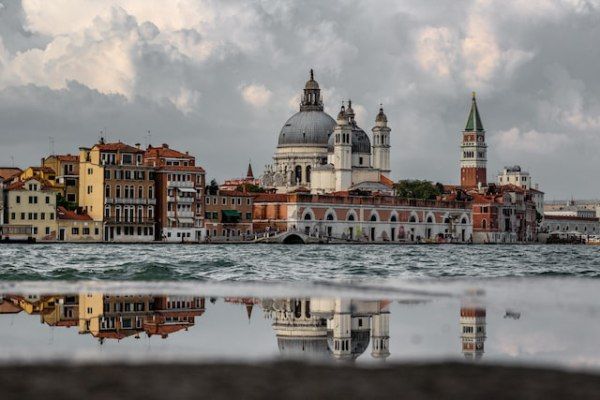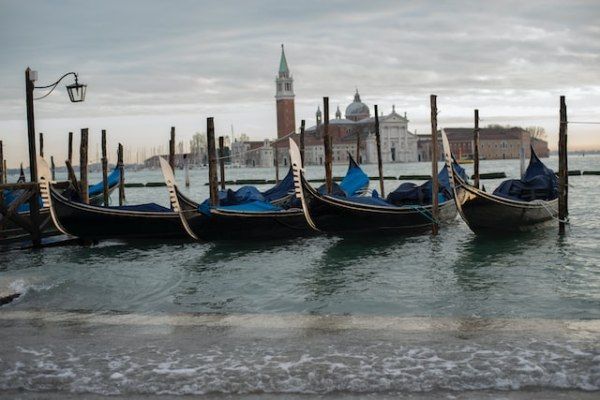For many tourists and visitors, traveling in Venice during high tides is challenging. In this article, we are going to show you what to do in Venice when it floods.
You will find out that it is possible to experience the city even when it is flooded if you take precautions. Otherwise, instead of a charming and fascinating visit to the floating city, you could actually experience something that you won't repeat again.
However, if you follow our tips, visiting our beautiful flooded city could be a moment you won't forget so easily.
5 thing to do in Venice when it floods: your guide to Venice acqua alta

Pictures of a flooded Piazza San Marco go around the world every year and you might actually think why our beautiful city has to flood over and over again.
Well, before telling you what you can actually do when Venice's water levels rise, you may want to know what "acqua alta" actually is.
"Acqua Alta" in Venice: the reasons behind this natural phenomenon

You may think that the main reason behind the flooding phenomenon is due to global warming but it's partially true.
Generally speaking, "acqua alta" has always happened, as the city has been built on water.
Typically, the acqua alta occurs from November to the beginning of Spring, but it can actually happen all year round with different levels of intensity.
It happens when astronomical and meteorological factors meet. On one side, in fact, we have the movement of the moon and the sun that influences the high tide (not just in Venice, of course!) and on the other side, the atmospheric conditions, particularly related to the movement of the winds.
Winds are strongly related to the phenomenon. When the southeasterly sirocco blows, great masses of seawater are transported along the Adriatic sea to the north (where there are the mouths of the lagoon). Acqua alta occurs even when the northeasterly bora wind blows strongly. If the two winds blow simultaneously the consequences are even stronger.
However, it won't be fair if we don't mention all the problems related to climate change.
Human intervention, in fact, is causing major problems to the city. Not only is the high level of industrialization of the coastal territory lowering the ground, but also global warming is causing the rising of the sea level.
These are two of the main problems that Venice is facing nowadays and these are also the reasons why Venice is called "the sinking city".
Venice Municipality is doing a lot to save the city (have you ever heard about the "Mose tidal barrier"?) but it is not enough. What Venice needs it is a holistic approach: Venice can't face this major problems with a temporary solution. Italy and UE have to cooperate to find a solution together that also implies doing something about the global warming. We'll see.
However, what would you do if you were in Venice during high tide?
The levels of high tides

Even if it floods very often, you do not have to expect that the entire city is subject to the phenomenon with the same intensity.
When San Marco is covered by water, for example, most of the time other parts of the city are completely dry. Some places, in fact, are higher than the sea level (do you remember the story of Rialto and the beginning of Venice?).
Anyhow, the reference point is the "zero ideographic" conventionally placed at Punta della Salute.
110 cm above the zero of Punta della Salute is considered high tide and it covers around 12 percent of the historic center.
A tide equal to or greater than 140 centimeters is considered exceptional. Luckily, this rarely happens (once every three years). However, when it occurs 57 per cent of the city is covered by water.
In these exceptional cases, the red warning code is displayed and the sirens sound and alert citizens and tourists.
Your guide to Venice Acqua Alta in 5 steps

1) Check if high tide is expected
There are many online tools that can tell you if high tide is expected.
You can use the Telegram bot (@centromareevenezia_bot) to know the situation in real time.
Otherwise, you could send a TEXT message to the following number (+39)3424141041 writing simply MAREA. You could expect some extra costs related to your phone provider.
Not to mention that you can just search the net and verify instantaneously the current situation.
2) Check the elevated walkways routes
As some areas of Venice get flooded more often than others (see Piazza San Marco, for example), the Municipality of Venice has organized a great system of elevated walkways.
If you check this link you can see the routes that are prepared for every area of Venice, subdivided by the six Sestieri, plus Giudecca, Murano, Burano and San Michele islands.
However, if the high tide rises above 120 centimeters, some of the walkways can be impracticable.
3) Take your rubber boots with you and protect your feet
There's nothing more annoying than having your feet wet. That's why whoever lives and works in Venice has a pair of rubber boots ready for these occasions.
They can save you some time in case you need to get around an area where there are no walkways and are very comfortable in case the water level is not so high.
That's surely the best way to get around the city during high tide.
4) Be prepared that public transport may be affected by acqua alta
In case the tide is particularly high, you may expect some delays and cancellations regarding public and private transports (like your gondola ride).
That's only because it can be very dangerous getting around the city if streets and canals seem actually the same thing.
5) Do not walk close to the borders of the canals
As Venetians, we have seen so many people that have fallen into the waters during high tides. Indeed, that's an experience that we do not recommend!
For your own safety, walk by the buildings and be always very careful!
We hope this journey though this amazing side of Venice has thrilled you and made you wish to come here even more!






